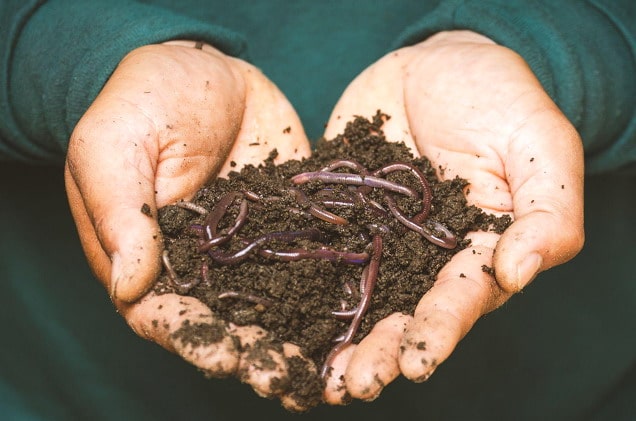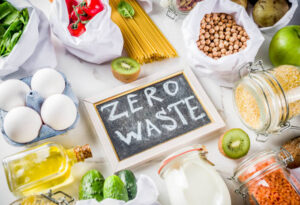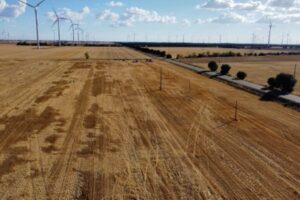How Does Your Garden Grow? Improving Your Soil

It should be clear that in order for plants to be able to flourish, they need a good start in life. That good start begins with providing them with well-prepared and fertile soil. How do you get this? Let’s take a look.
Preparing the Ground
How much soil prep you need to do is going to depend on what your garden has there to begin with.
For example, you may be lucky and just need to do a little weeding. But if moving into a new home your task could be cut out for you, as you may have just a thin layer of topsoil covering a load of builders’ rubble. Or it is possible you may just want to repurpose areas of lush lawn to make bedding for vegetables or flowers.
There’s no doubt whatever you are faced with, you are going to need to put in some hard work. In years to come, you will either thank yourself (or curse yourself) for doing (or not doing) this groundwork prep now.
Look on it also that you are going to have a lower maintenance garden in the future too for all the hours you put in now, and much healthier and more thriving plants that will thank you for it.
After you’ve done the ground prep, you need to improve your soil.
Improving The Soil
When you improve the soil, you are actually making it easier for the plant to thrive, as you are giving it the food and all the nutrients it needs plus the room for its roots to grow out.
It is best to do this digging and mucking the winter before, but it’s not the end of the world if you start late. What matters most is that you do it.
You need to start by digging in plenty of well-rotted, bulky organic matter such as horse manure, garden compost, or soil humus. Aim for around half a wheelbarrow load of organic matter per each square meter.
Then apply a handful of organic fertiliser such as blood, bone or fish meal and fork it in deep.
What’s The Difference Between Compost And Soil Humus?
There is a difference between compost and humus. Basically, soil humus is far richer than the former.
Organic matter that we contribute, such as leftover food or garden waste, decomposes to produce compost, a rich black dirt.
Compost is full of microorganisms (bugs, bacteria, fungi, and microbes) that continue to feast upon, and break down, this dark organic matter. Over many years, compost fully decomposes to become soil humus. So soil humus is fully decomposed compost. It can be black or brown.
Why Humus Is Better Than Compost
Humus is rich in nutrients to make soil healthy including carbon, calcium, magnesium, sulphur, and phosphorus. Nitrogen is one of the most vital nutrients, essential for most plants. Humus provides nitrogen and other nutrients necessary for agriculture.
Soil enriched with humus retains moisture much better and is more drought resistant. This is because humus is spongy in nature, enabling it to retain up to 90% of its weight in water. This sponginess also means humus better retains the nutrients to feed the plants.
Because of humus’s structure, it helps make the soil looser, allowing air and water to more easily flow through the soil to feed the plants’ roots.
Farmers and gardeners use humus because it provides nutrients for plant growth, improves soil moisture absorption, and facilitates workability in the soil.
Benefits of using Lime on Acidic Soil
Lime can be added to the soil if it is acidic to enable plants to grow optimally. Even where soil is not generally acidic as such, soil can become acidic over time. A simple soil test will show where your soil pH is at.
Proper liming can have wide benefits, particularly if you are trying to grow fruit and vegetables.
When Good Fertilisers Come In
Fertilisers help boost plant growth. If you have healthy soil by doing the prep work we have gone into, you may not need to use fertiliser at all. However, it is still beneficial to use it because by doing so, you will increase your yield.
Some people make the mistake of only adding fertiliser, and not doing the groundwork. Ideally, fertiliser and humus should work together in harmony, not one or the other on its own.
Fertilisers contain numerous concentrated nutrients and trace elements your plants will love.
The major plant nutrient fertilisers contain are nitrogen (for healthy green leaf growth), phosphorus (for root and shoot growth), and potassium (for the flowers or fruits and all-round health and strength).
All fertilisers should have their N: P: K ratio listed on their packaging: the N, P, and K standing for the chemical symbols for nitrogen, phosphorus, and potassium, respectively. A ratio of 20:20:20 indicates that the fertiliser is balanced with all the nutrients in equal proportions.
Fertiliser comes in two main types: organic and inorganic.
Organic Fertiliser
Organic fertiliser comes from plant or animal sources. Large organic molecules must be broken down by soil organisms before the nutrients inside them are released for plant use, meaning that organic fertiliser is slower to act than inorganic fertiliser.
Organic Fertilisers include seaweed, fish blood and bones, bone meal, poultry manure pellets, and liquid comfrey or nettle feeds.
Inorganic Fertiliser
Inorganic fertiliser is synthetic, containing artificial forms of plant nutrients, and/or minerals that are naturally occurring that have been mined and added to the product.
Inorganic fertiliser tends to be more concentrated and faster acting than organic fertiliser.
Ways to Use Fertilisers
There are different ways to apply fertiliser, and which way you choose will often depend on the product. Here are a few of the most common ways:
- Top Dressing
- Base Dressing
- Watering On
- Foliar Feeding
Conclusion
Your garden will love you by doing the right prep and using the right products at the right time. In the long run, you will literally save yourself a ton of spadework by putting in the work initially, plus you’ll have a stunning garden to show for it that will be more hardy and drought-resistant. Enjoy your garden!







